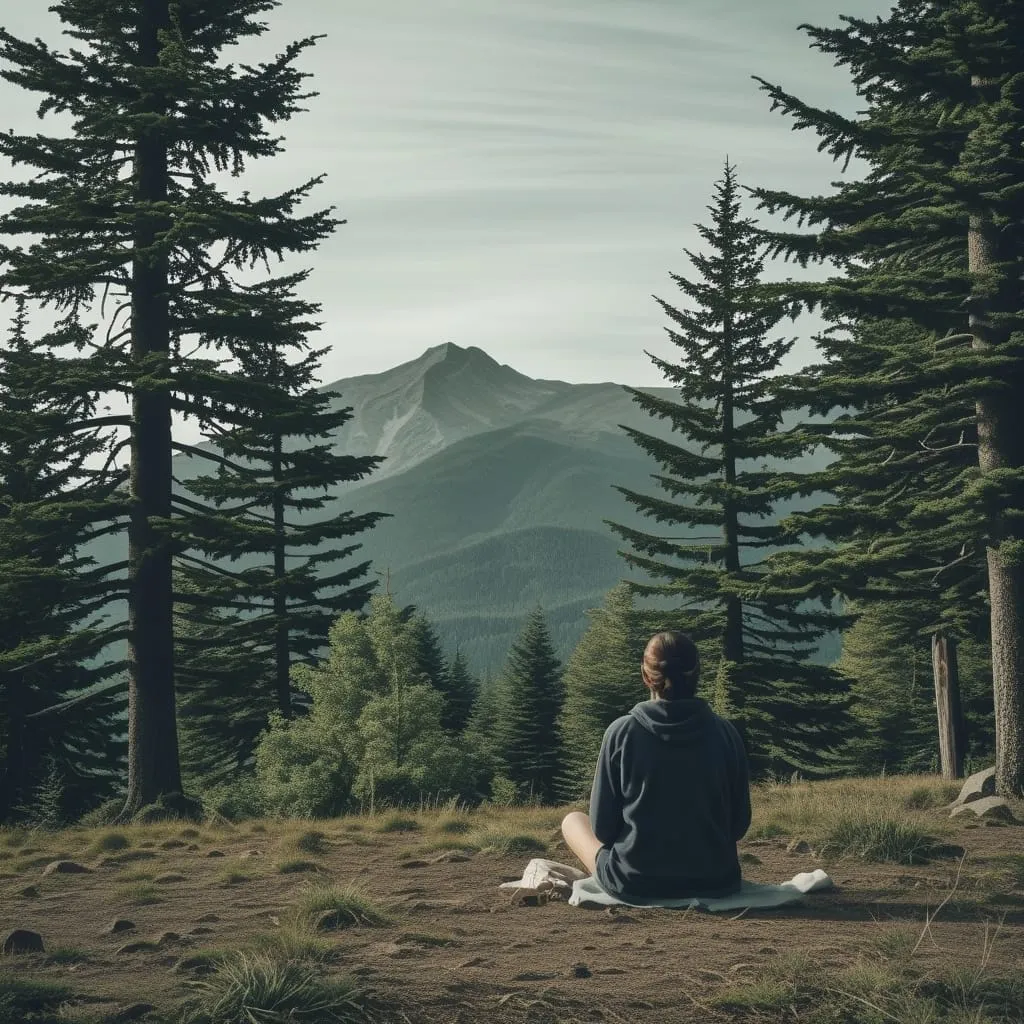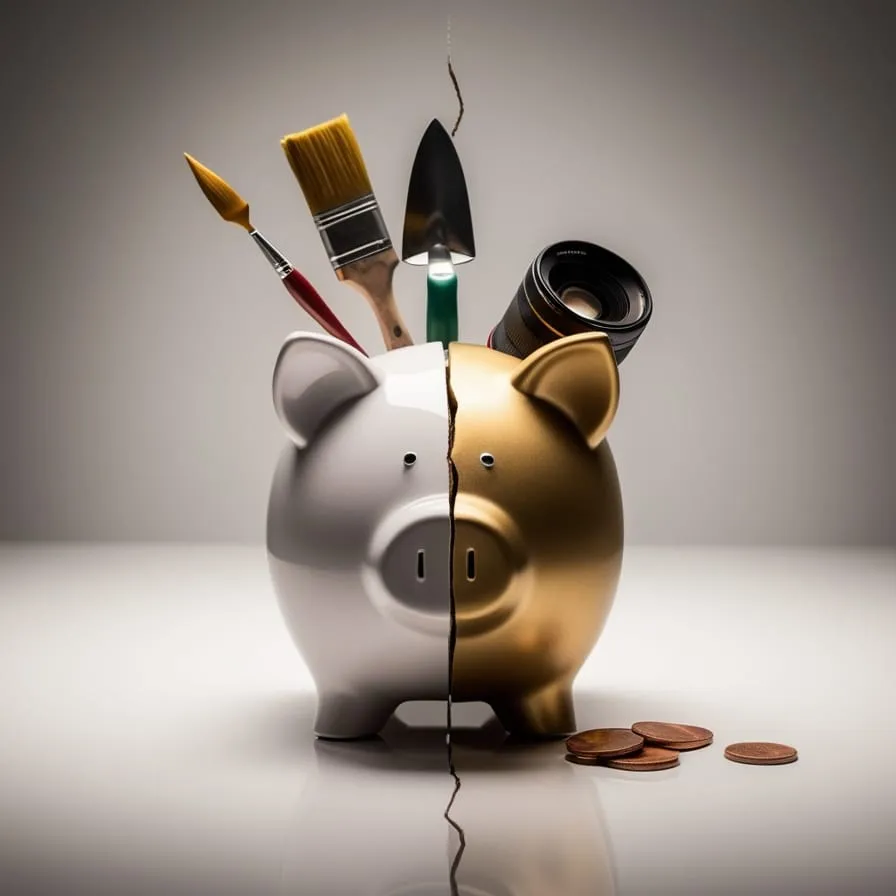Imagine waking up without an alarm, sipping coffee leisurely while planning your day around activities you love. Early retirement is a dream for many, offering the promise of freedom, adventure, and time to pursue passions. It's not just about leaving the 9-to-5 grind but about creating a life filled with purpose and enjoyment.
Retiring a decade earlier than the traditional age requires strategic planning and disciplined execution. It's about making smart financial choices, but it also involves envisioning what you want your post-work life to look like. Are you dreaming of traveling the world, starting a new hobby, volunteering, or spending more time with family and friends? Whatever your vision, early retirement gives you the flexibility to live life on your terms.
This journey isn't just for the wealthy. With careful planning and a commitment to making wise decisions, anyone can achieve it. From evaluating your financial health to staying adaptable to life's changes, every step brings you closer to your goal. In this guide, we'll walk through ten practical steps to help you retire ten years early, transforming your dream into a reality. Let's get started on this exciting journey to freedom and fulfillment.
Evaluate Your Financial Health
Before you can embark on the journey to early retirement, you need to know where you stand financially. Think of it as taking a snapshot of your current financial situation. Start by listing all your assets—savings accounts, investments, real estate, and any other valuables. Next, tally up your liabilities, including debts like mortgages, car loans, credit card balances, and any other money you owe.
Understanding your net worth (assets minus liabilities) gives you a clear picture of your financial health. It's essential to be honest and thorough in this assessment. This will help you identify areas that need improvement and opportunities for growth.
Another crucial aspect is tracking your monthly income and expenses. Know how much money comes in and where it goes. This helps in identifying spending patterns and potential areas for saving. Consider using financial tracking apps or a simple spreadsheet to keep things organized.
Lastly, review your credit score and credit report. A good credit score can save you money on interest rates and insurance premiums, which is beneficial when you're aiming to boost your savings for early retirement.
Set Clear Financial Goals
Setting clear financial goals is the next critical step toward achieving early retirement. It's like plotting a course on a map; without a destination, you'll never know if you're on the right path. Start by defining what early retirement looks like for you. Do you want to retire at 55, 50, or even earlier? Knowing your target retirement age helps in shaping your financial plan.
Once you have a timeline, estimate the amount of money you'll need to retire comfortably. Consider your desired lifestyle, including daily living expenses, travel, hobbies, and unexpected costs like healthcare. Use retirement calculators to get a ballpark figure, but remember to adjust for inflation and potential changes in expenses over time.
Next, break down this big goal into smaller, manageable milestones. For instance, determine how much you need to save each year, quarter, or month to reach your target. Having specific, measurable goals makes it easier to track your progress and stay motivated.
Don't forget to set short-term goals as well, such as paying off high-interest debt or building an emergency fund. Achieving these smaller objectives will boost your confidence and provide a solid financial foundation.
Review and adjust your goals regularly. Life circumstances and financial markets change, so your plan should be flexible enough to adapt. Clear financial goals provide direction and purpose, guiding your decisions and actions toward a financially secure early retirement.
Create a Detailed Budget
Creating a detailed budget is essential for staying on track with your early retirement goals. A budget acts as your financial blueprint, showing exactly where your money is going and helping you make informed decisions.
Start by categorizing your expenses into fixed and variable costs. Fixed expenses are the necessities that remain constant each month, such as rent or mortgage payments, utilities, insurance, and groceries. Variable expenses, on the other hand, include things like dining out, entertainment, travel, and hobbies. Document every dollar spent to get a clear picture of your spending habits.
Once you have your expenses laid out, compare them to your income. This will highlight areas where you can cut back and increase savings. Aim to allocate a significant portion of your income toward savings and investments. Many financial experts recommend the 50/30/20 rule—50% for necessities, 30% for discretionary spending, and 20% for savings and debt repayment. However, for early retirement, you might need to adjust these percentages, prioritizing savings and investments more heavily.
Keep track of your budget regularly. Use budgeting apps or spreadsheets to monitor your spending in real-time and make adjustments as needed. Monthly reviews can help you stay accountable and ensure you're making progress toward your retirement goals.
Cut Unnecessary Expenses
Trimming unnecessary expenses is a crucial step toward building a robust savings plan for early retirement. Start by scrutinizing your spending habits and identifying areas where you can cut back without sacrificing your quality of life.
Begin with discretionary spending. These are the non-essential items like dining out, streaming services, subscriptions, and impulse buys. Consider cooking at home more often, canceling unused memberships, and finding free or low-cost entertainment options. Small changes in these areas can lead to significant savings over time.
Next, look at your fixed expenses. While these might seem non-negotiable, there are often opportunities to reduce costs. For instance, you can negotiate lower rates on your insurance policies, switch to more affordable phone and internet plans, or refinance your mortgage to take advantage of lower interest rates. Even minor adjustments can have a substantial impact over the long term.
Adopt a minimalist mindset. Evaluate your possessions and sell items you no longer need or use. This not only declutters your life but also boosts your savings. Practice mindful spending by asking yourself if a purchase aligns with your retirement goals before you buy.
Maximize Your Savings
Maximizing your savings is a fundamental part of retiring early. The more you save, the faster you can reach your goal. Start by setting a high savings rate, ideally aiming for 20-30% of your income or more. This might seem ambitious, but with disciplined budgeting and spending cuts, it’s achievable.
Automate your savings to ensure consistency. Set up automatic transfers from your checking account to your savings and investment accounts each payday. This way, saving becomes a priority, not an afterthought.
Take advantage of tax-advantaged retirement accounts like 401(k)s, IRAs, or Roth IRAs. Contribute as much as you can, especially if your employer offers matching contributions. This is essentially free money that can significantly boost your retirement savings.
Consider opening a high-yield savings account or a money market account for your emergency fund and short-term savings. These accounts typically offer better interest rates than standard savings accounts, helping your money grow faster.
Cutting unnecessary expenses, as previously discussed, frees up more money to put toward savings. Reinvest any windfalls, such as bonuses or tax refunds, rather than spending them.
Lastly, review and adjust your savings plan regularly. Life changes and financial markets fluctuate, so staying flexible ensures you’re always optimizing your savings strategy. By consistently maximizing your savings, you'll accelerate your journey to early retirement, securing a comfortable and worry-free future.
Invest Wisely
Investing wisely is key to growing your wealth and achieving early retirement. Start by educating yourself about different types of investments, such as stocks, bonds, mutual funds, ETFs, and real estate. Understanding these options will help you make informed decisions that align with your risk tolerance and financial goals.
Diversification is crucial. Spread your investments across various asset classes to minimize risk. This way, if one investment underperforms, others may compensate, providing overall stability to your portfolio. Consider a mix of stocks for growth, bonds for stability, and real estate for income generation and potential appreciation.
Take advantage of tax-advantaged accounts like 401(k)s and IRAs to invest in the stock market while enjoying tax benefits. For non-retirement investments, consider using a brokerage account. If you’re new to investing, consider using robo-advisors or seeking advice from a financial advisor to build a balanced portfolio.
Consistency is key. Invest regularly, regardless of market conditions. This approach, known as dollar-cost averaging, reduces the impact of market volatility and helps you build wealth over time. Reinvest dividends and capital gains to compound your returns.
Stay informed about market trends and adjust your portfolio as needed. Regularly review your investments to ensure they remain aligned with your retirement timeline and risk tolerance.
Diversify Your Income Streams
Diversifying your income streams is a powerful strategy for achieving early retirement. Relying on a single source of income is risky, as it leaves you vulnerable to job loss or economic downturns. Multiple income streams provide financial stability and accelerate your savings.
Start with your primary job. Seek opportunities for advancement, ask for raises, or switch to higher-paying roles to increase your earnings. Meanwhile, explore side hustles that align with your skills and interests. Freelancing, consulting, or part-time work can bring in additional income without overwhelming your schedule.
Investing is another excellent way to generate passive income. Rental properties, dividend-paying stocks, and peer-to-peer lending can provide regular income with minimal effort. Real estate, in particular, can be lucrative, offering rental income and potential property appreciation. However, it requires careful management and market knowledge.
Consider creating digital products or online businesses. E-books, courses, and print-on-demand merchandise can generate passive income with relatively low upfront costs. Additionally, leveraging platforms like YouTube or blogging can bring in ad revenue, sponsorships, and affiliate marketing income.
Lastly, don't overlook the potential of investments in small businesses or startups. While riskier, these can offer substantial returns if chosen wisely.
Stay Healthy and Active
Staying healthy and active is essential for a fulfilling early retirement. Good health reduces medical expenses and enhances your ability to enjoy activities you love. Incorporating healthy habits into your daily routine can significantly impact your quality of life and longevity.
Start with a balanced diet rich in fruits, vegetables, lean proteins, and whole grains. Proper nutrition supports overall health, boosts energy levels, and prevents chronic diseases. Consider consulting a nutritionist to tailor a diet plan that meets your specific needs.
Regular physical activity is equally important. Aim for at least 30 minutes of moderate exercise most days of the week. This can include walking, cycling, swimming, or even dancing. Incorporate strength training exercises to maintain muscle mass and bone density, which are crucial as you age.
Mental health is another vital component. Practice stress management techniques such as meditation, yoga, or deep breathing exercises. Engage in hobbies and activities that bring you joy and relaxation. Maintaining social connections with family and friends also supports mental well-being.
Regular health check-ups and preventive care are essential. Stay up-to-date with vaccinations, screenings, and routine exams to catch potential issues early.
Adopting a healthy lifestyle not only helps you live longer but also ensures you can fully enjoy your early retirement. By prioritizing your health, you set the stage for an active, vibrant, and fulfilling life beyond the working years.
Plan for Healthcare Costs
Planning for healthcare costs is a critical aspect of early retirement. Medical expenses can be substantial, especially as you age, and failing to prepare can derail your retirement plans.
Start by understanding your healthcare needs and potential costs. Research the costs of health insurance premiums, deductibles, and out-of-pocket expenses. If you plan to retire before becoming eligible for Medicare at age 65, you’ll need to find alternative health insurance. Options include private insurance, the Health Insurance Marketplace, or COBRA coverage, though each comes with different costs and benefits.
Consider opening a Health Savings Account (HSA) if you have a high-deductible health plan. HSAs offer tax advantages, and the funds can be used for qualified medical expenses. Contributions, earnings, and withdrawals are all tax-free, making HSAs an excellent tool for covering healthcare costs in retirement.
Factor in long-term care insurance. Long-term care can be expensive, and having insurance can protect your savings from being depleted by prolonged medical care or assisted living costs.
Maintain a healthy lifestyle to potentially reduce future medical expenses. Preventive care, regular exercise, and a balanced diet can help minimize the risk of chronic diseases and costly treatments.
Finally, build a healthcare fund within your retirement savings plan. Allocate a portion of your savings specifically for healthcare expenses to ensure you’re financially prepared for any medical needs.
Stay Flexible and Adaptable
Staying flexible and adaptable is essential for navigating the journey to early retirement. Life is unpredictable, and the ability to adjust your plans in response to changing circumstances ensures that you stay on track even when faced with unexpected challenges.
First, regularly review your financial plan. Reassess your goals, budget, savings, and investments at least annually. Market conditions, personal circumstances, and economic factors can change, so keeping your plan current allows you to make timely adjustments. Flexibility in your strategy can help you stay resilient during market downturns or personal setbacks.
Next, build a financial cushion by maintaining a robust emergency fund. Aim to save three to six months' worth of living expenses. This fund provides a safety net, allowing you to handle unforeseen expenses without derailing your early retirement plans.
Be open to alternative income sources if your primary plan doesn’t yield the expected results. For example, if investments underperform, consider part-time work, freelancing, or monetizing a hobby. Diversifying your income sources not only mitigates risk but also keeps you financially agile.
Additionally, stay informed and continuously educate yourself about personal finance and investment strategies. The financial landscape evolves, and staying updated empowers you to make informed decisions.
Finally, maintain a positive mindset and embrace change. Flexibility isn't just about financial adjustments; it’s also about adapting your lifestyle and expectations as needed. Whether it’s downsizing your home, adjusting travel plans, or altering leisure activities, being adaptable helps you navigate the ups and downs of early retirement smoothly.
Embrace the Freedom of Early Retirement
Retiring early doesn’t mean you stop working altogether; it means taking ownership of your time and using it in ways that bring you joy and fulfillment. It’s about having the freedom to choose how you spend your days, whether that’s traveling, pursuing hobbies, volunteering, or even starting a new venture.
By following these ten steps—evaluating your financial health, setting clear goals, creating a budget, cutting unnecessary expenses, maximizing savings, investing wisely, diversifying your income, staying healthy, planning for healthcare costs, and remaining adaptable—you can set the stage for a prosperous and enjoyable early retirement.
Early retirement is about more than financial independence. It's about reclaiming your time and designing a life that aligns with your passions and values. So, start planning today, and look forward to the freedom and possibilities that early retirement brings.






